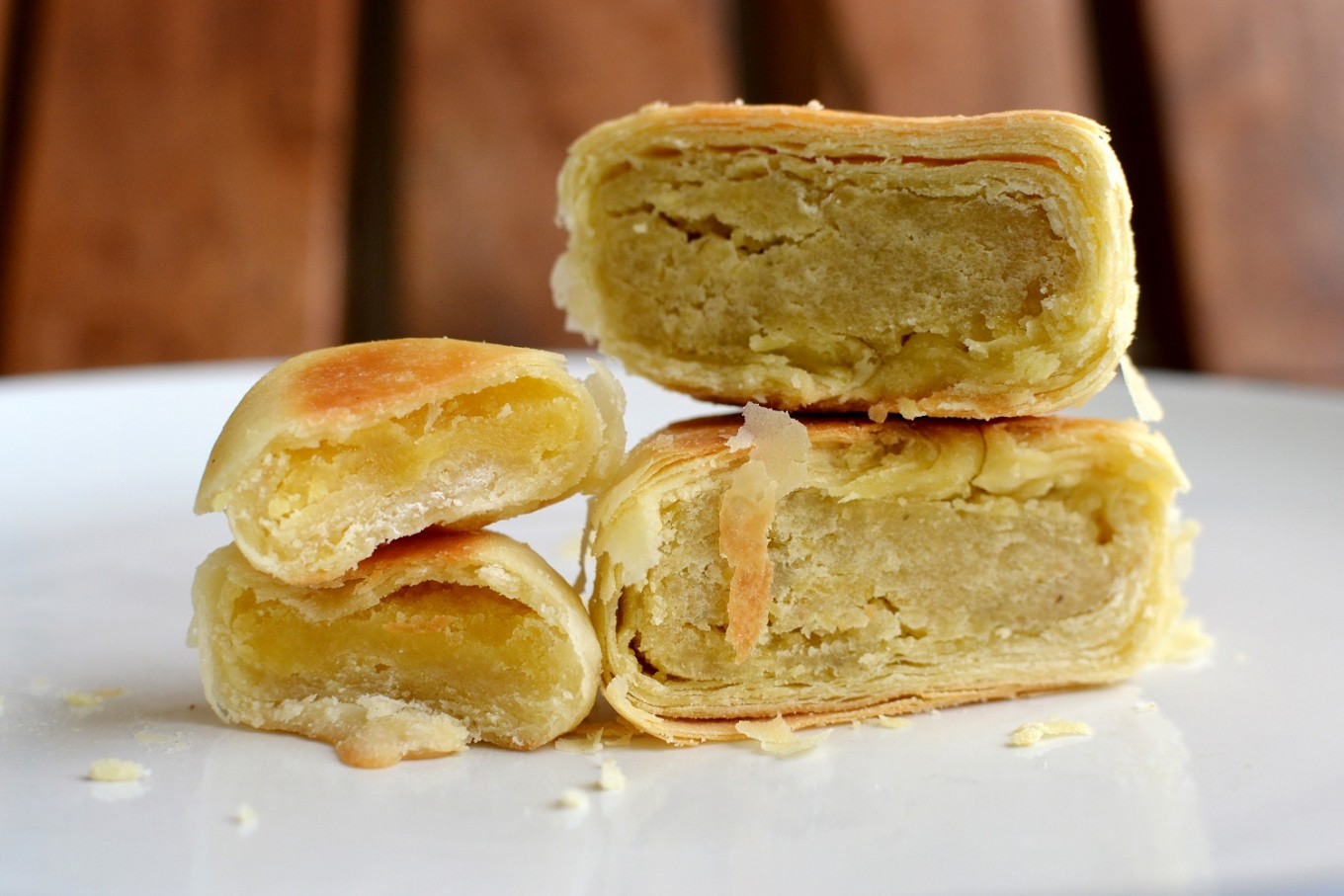Getting to know ‘bakpia,’ a Chinese-influenced cake
Change text size
Gift Premium Articles
to Anyone
 Yogyakarta-style bakpia has thicker and chewier dough. Meanwhile, Surakarta-style bakpia has a flaky texture and is chock-full of filling. (JP/Stefanus Ajie)
Yogyakarta-style bakpia has thicker and chewier dough. Meanwhile, Surakarta-style bakpia has a flaky texture and is chock-full of filling. (JP/Stefanus Ajie)
Visitors to Yogyakarta may have heard of bakpia, the full moon-shaped pastry with mung bean paste filling.
Although the sweet treat is among the icons of Yogyakarta, bakpia actually has Chinese influences.
First introduced around the beginning of the 20th century, the name is derived from a Hokkien word, which literally means cake with pork filling. In the past, it was not as popular as moon cake or the Chinese New Year staple nian gao (sticky rice cakes).
Bakpia’s popularity increased in 1940s, as producers such as Kwik Sun Kwok, changed bakpia's filling from pork to mung bean paste, allowing the Muslim community to also savor the cake.
Read also: Getting to know 'bir pletok,' Betawi's staple drink
Fast forward to the 1980s, Yogyakarta, particularly the Pathuk and Ngampilan areas, had become a bakpia center, with many houses selling the cake. To differentiate their bakpia from their neighbors', bakpia makers used their house numbers as their brand names.
In addition to Yogyakarta, Surakarta in Central Java is also known for its bakpia.
In Balong, the city’s Chinatown, bakpia is a breakfast staple for sellers and buyers at Pasar Gede. The cake is also commonly found at Chinese altars or given as a festive gift during traditional Chinese festivals.
After learning a brief history about Yogyakarta and Surakarta style bakpia, here comes the next question: How do we tell them apart?
The first thing you will notice is that Yogyakarta-style bakpia appears to be smaller than Surakarta's. Once food enthusiasts take a closer look, they will also discover that Yogyakarta-style bakpia has thicker and chewier dough. Meanwhile, Surakarta-style bakpia has a flaky texture and is chock-full of filling. (jes/kes)









